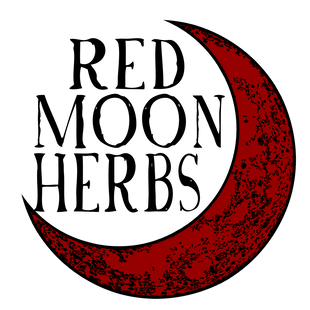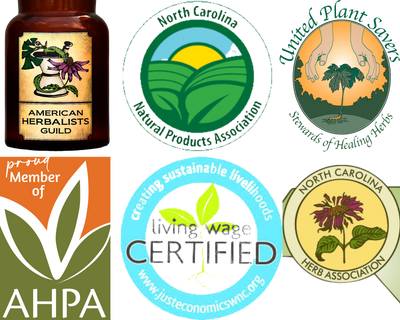Living in the Wise Woman Way
In my heart, the practice of the Wise Woman Tradition is an ancestral health-affirming belief that passes down from generation to generation even in our subconscious. We may step away from these hands-on skills for multiple generations, but they never really leave us. Harvesting juicy violet leaves, nibbling on early-spring
chickweed, pawing through dense clay for potassium-rich
dandelion roots - these rituals are built into our cellular memory. They are our birthright and biological imperative.
Our ancestors used what they could reach or what grew right outside their back door. So do/did the "granny (or grandpa) witches" who are still alive today. Who had time, resources, or the ability to buy from afar or transport goods along great distances? Exotic Amazonian (as in the jungle, not the retail mogul) antioxidant-rich superfoods were accessible only to those who lived in the Amazon. The name of the game out of necessity was “hyperlocal", and not because it was a buzzword, but because it was life.

The substances we use as beneficial to health shift from region to region and may even change among microclimates within one community. A homestead up in a shady holler might use broad-leaf
plantain to pack a wound, while those near the sunny meadow down the way might use the lance-leaved variety of the same plant. There is a magic simplicity in knowing the weeds or wild plants which grow closest to your home and touch your bare feet. Gathering abundant beneficial species and making them into tinctures, oils, dried herbs, vinegars, and salves for your own personal herb stash or
herbal first aid kit can be done even with scarce monetary resources, as long as the intention, solid identification skills, and willing desire is present.
Preparation Making in the Wise Woman Tradition
Most important for the home herbal preparation maker is some familiarity with botany, a good field guide, and pure keen observation of when to harvest herbs and how to handle them quickly once harvested so that their peak
beneficial potency is preserved. Key rhythmic elements of wise woman preparation making include harvesting leaves and flowers in the spring, collecting seeds in the late summer, and digging roots in the late fall or winter.

Harvesting according to the lunar cycle and clipping the aerial parts of plants during the full moon while saving underground roots for the dark of the moon/the new moon is another ritual practice that dates back many centuries. Both our ancestors and modern herbalists understand that they must get to know a plant intimately in order to come into relationship with it and to properly harvest plants at different seasons, therefore gleaning varying nutrients that manifest differently from seed to root and summer to winter. The cycles of the plant-body, human-body, and earth-body align and the synergy of this collision makes for the best preparations.
How Beneficial Plants Find You
One impactful experience that I’ve had is the sudden and abundant appearance of a plant that is very needed in my life, or the life of a dear friend or family member. This shared story is quite common in the herbal community and often goes something like this: someone is having acute digestive issues and general tummy troubles - cue the dandelions suddenly surrounding the back patio of their home or favorite walking trail. Or a woman who has recently been diagnosed with a breast lump encounters a large field of feisty pokeweed near their office or a popup circle of violets in a woodland glade they frequent.
This trend has been observed in the appearance of spiky teasel root in areas where lyme-carrying ticks are prevalent. Fascinatingly, teasel is a treasured anti-spirochete, a powerful antidote against the spirochete bacteria that propel lyme. For more on this phenomenon, see this article, "Can Plants Predict the Future?".
Pokeroot and Yarrow
One specific plant that pops up all over North America, including the Carolina Piedmont where I grew up, and was used in Appalachian folk traditions is pokeweed (Phytolacca americana). The long-standing tradition of eating poke salat is a rich one. Even if you didn't grow up eating poke greens in spring like I did, you surely heeded the warnings of how poisonous this plant could be and were under strict orders not to the eat berries. But come springtime, carefully selecting the young light green leaves and boiling them in a full three changes of cooking water resulted in a dish which offered the whole family a good "cleaning out" after a long winter. Pokeweed is so powerful a plant that the extract of its roots is administered in a drop dose, one to three drops at a time.

Another traditional southern folk way to ingest poke is to swallow the ripe berries, which stain magenta in the wildest way and are often used as a natural dye. There is an immunity-optimizing spring cleanse protocol which involves swallowing one whole (fresh or frozen) poke berry on day one, two on day two, and so on, up until the tipping point where someone experiences issues associated with a strong cathartic dose of the herb (dizziness, nausea), and then stopping.
If I had to pick only two herbs to have in my herbal emergency kit and home herb hub, powerful poke would be my first choice.
Yarrow (
Achillea millefolium) - for its styptic (blood-stopping) and anti-infective properties - is a close second. But faced with the impossible task of only choosing one, I'd have to regretfully say goodbye to yarrow and stick with poke; that’s how versatile a lymph and immune system-amplifying first aid plant it is, both internally in low doses and topically in an
oil or
salve. You can learn to make your own pokeweed salve or oil
here.
Weeds as Health-Affirming
We have begun to see dandelion greens for sale on the shelves of natural food stores,
elderberry has become a mainstream staple for surviving seasonal immune threats, and
beneficial mushrooms like
reishi are taking their rightful place as adjunct allies in complementary and "alternative" health clinics. I take heart in believing that the popularity of the benefits of the common, abundant, and hyperlocal plant will one day allow some of the more at-risk plants (
see United Plant Savers, an incredibly big-hearted organization we choose to support and partner with, for a full updated list) to have a chance for survival, as people turn back to their indigenous roots and ‘eat the weeds’ again. May these plants that volunteer in your garden, city sidewalks, or patio pots find a special place in your heart and in your kitchen or bathroom cabinet.
For plants and people,
Jeannie and Heather













Comments
Jude said:
I have just finished ‘weeding’ my garden and now have a veritable feast in front of me ready to be consumed and also dried for storage. This was a beautiful timely read. Thankyou 🙏